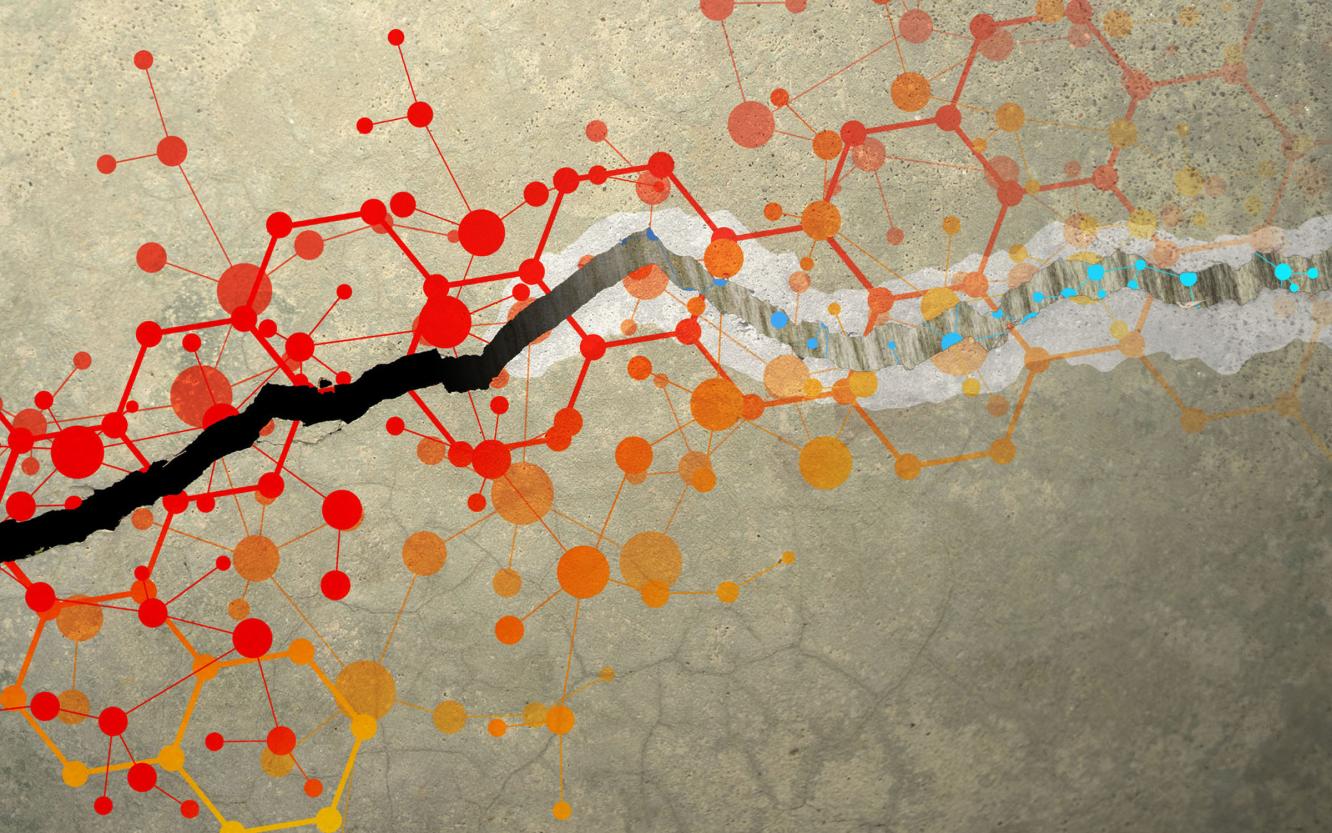Environmental Transformations and Interactions
New Type of Composite Cement for Geothermal Wells Withstands Exposure to Carbon Dioxide and Carbonate Formation
Microscopic and spectroscopic analysis of new self-healing polymer-cement composite reveals structural and chemical changes after carbonate formation.

The Science
Geothermal energy production requires mechanically, thermally, and chemically demanding conditions to recover hot fluids from underground. Cements that insulate wellbore casings from the surrounding rock need to withstand these extreme conditions. A multi-institutional team first developed a cement containing a self-healing epoxy resin to automatically seal tiny fractures, and now they have studied the elemental, structural, and chemical changes of this polymer-cement composite after exposure to CO2-rich conditions similar to those found during geothermal plant operation.
The Impact
Geothermal working fluids carry naturally occurring CO2. Carbon dioxide reacts with calcium hydroxide in conventional wellbore cement and forms carbonates. These minerals are known to render the material brittle; subsequent mechanical, thermal, and chemical stress can cause cement linings to fail. These failures can have massive consequences, including environmental contamination and costly repairs coupled with the loss of millions of dollars when production stops.
Summary
The team immersed samples of the polymer-cement composite in a sodium chloride brine pressurized with 3000 psi of supercritical CO2 at 250 °C for one month. White crystals of calcium carbonate formed on the samples, though they formed to a significantly greater extent on unmodified cement. Then they examined changes in the material’s microstructure and elemental composition to track how the materials changed after carbonation. To do this, they used synchrotron-based X-ray fluorescence along with X-ray absorption near edge structure spectroscopy at Brookhaven National Laboratory, and they used X-ray computed tomography, and scanning electron microscopy coupled with energy dispersive spectroscopy at EMSL, the Environmental Molecular Sciences Laboratory, a DOE Office of Science user facility at Pacific Northwest National Laboratory. Finally, they measured the compressive strength of samples from each condition. This work is part of EMSL’s Biogeochemical Transformations Integrated Research Platform.
Carbonation takes place to a lesser extent in the polymer-cement composite, compared to unmodified cement, despite the composite’s higher porosity. The unmodified cement attained a two-times increase in compressive strength simultaneously with a significant increase in brittleness associated with its reaction with CO2 to form calcium carbonate. Conversely, for the composite, the presence of the polymer in the cement’s pores seems to partially buffer the carbonation reaction despite the pore abundance. The polymer-cement composite samples showed a slight decrease in strength after exposure to CO2 in brine; however, their compressive strength of 3500 psi is still well above the 1000 psi requirement for wellbore cement, making polymer-cement composites suitable for enhanced geothermal systems.
PI Contacts
Carlos A. Fernandez, Pacific Northwest National Laboratory, carlos.fernandez@pnnl.gov
Simerjeet K. Gill, Brookhaven National Laboratory, gills@bnl.gov
Funding
Brookhaven National Laboratory's Laboratory Directed Research and Development program; DOE Office of Science user facilities: National Synchrotron Light Source II, Advanced Photon Source and EMSL, the Environmental Molecular Sciences Laboratory; and DOE Energy Efficiency and Renewable Energy Geothermal Technologies Office.
Publications
M.S. Elbakhshwan, et al., “Structural and chemical changes from CO2 exposure to self-healing polymer cement composites for geothermal wellbores.” Geothermics 89, 101932 (2021). [DOI: 10.1016/j.geothermics.2020.101932] OSTI ID 1681213.

